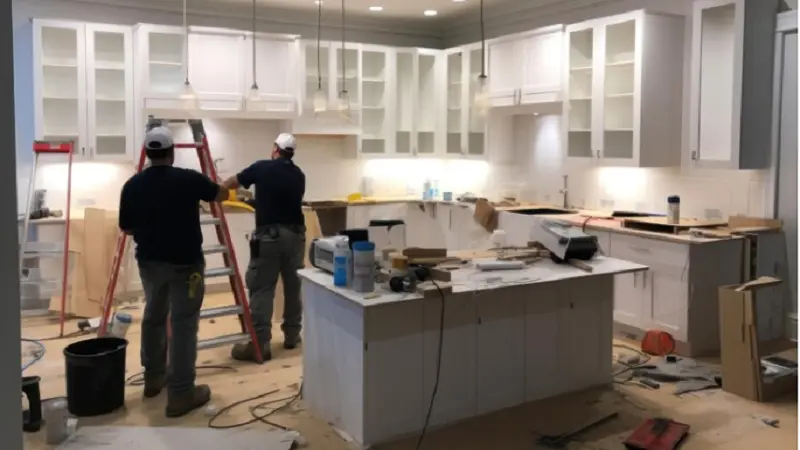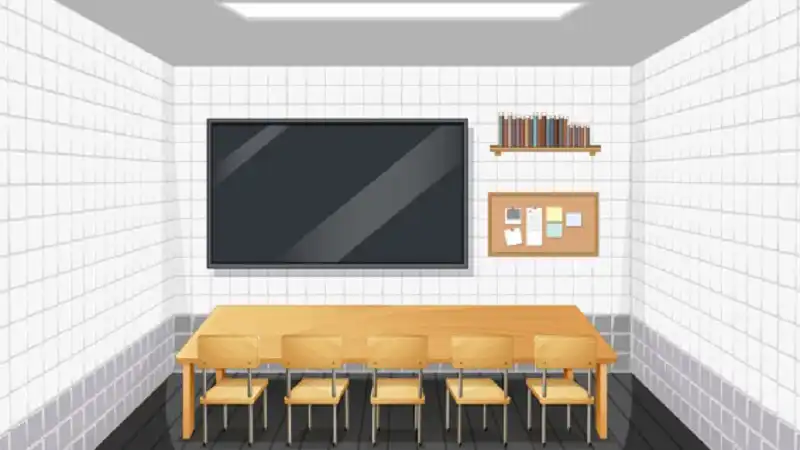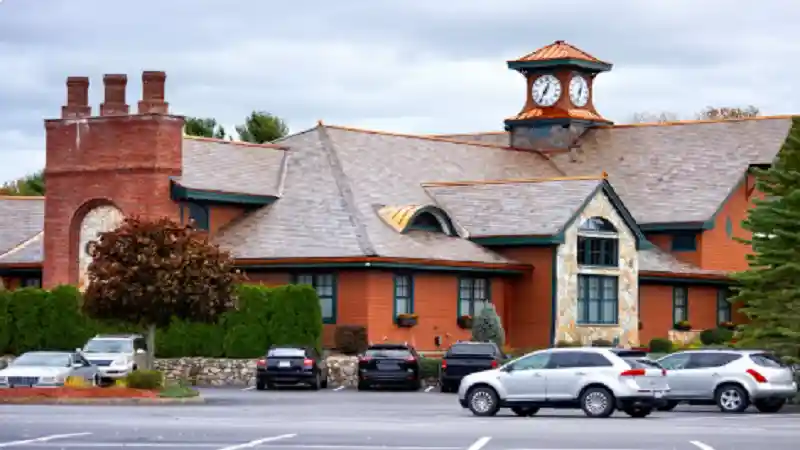1. Introduction to www .flyarchitecture . net
The website www .flyarchitecture . net is a leading hub for architectural enthusiasts, professionals, and clients seeking innovative design solutions. This platform offers a comprehensive range of services centered around modern architectural design, pushing the boundaries of traditional architecture through cutting-edge techniques, sustainable practices, and high-tech integrations.
Founded by a group of forward-thinking architects, www .flyarchitecture . net has gained recognition for its role in shaping urban landscapes globally. This article delves into the key aspects of Fly Architecture, its impact on the field, and how www .flyarchitecture . net is driving change in the industry.
2. What is Fly Architecture?
Fly Architecture is a modern architectural approach that emphasizes creativity, functionality, and eco-friendly design. The term “fly” symbolizes lightweight structures, openness, and the seamless integration of nature into architectural spaces. Fly Architecture moves beyond heavy, concrete-based designs and focuses on materials that are sustainable and easy to work with, such as glass, aluminum, and timber.
The architecture featured on www .flyarchitecture . net follows these principles, showcasing buildings that prioritize environmental harmony, energy efficiency, and innovative use of space.
3. The Evolution of Modern Architecture
Modern architecture has undergone a radical transformation in the last few decades, with architects constantly experimenting with new styles, materials, and technologies. Traditional designs have given way to sleeker, more efficient structures, often incorporating minimalism and sustainability.
Fly Architecture emerged as a subset of modern architecture that emphasizes mobility, flexibility, and environmentally conscious designs. At www .flyarchitecture . net, this evolution is evident in the projects that blend futuristic elements with the practicality of everyday use.
Key Trends in Modern Architecture:
- Minimalism: Clean lines, open spaces, and simplicity.
- Sustainability: Eco-friendly materials and energy-efficient designs.
- Technology Integration: Smart homes, automation, and modern construction techniques.
4. Key Features of Fly Architecture
Fly Architecture revolves around a few key features that make it distinct from other architectural styles. These features are highlighted on www .flyarchitecture . net, include:
- Lightweight Materials: Fly Architecture relies on materials such as aluminum, glass, and sustainable timber. These are not only durable but also eco-friendly.
- Transparency: A significant emphasis on glass to maximize natural light and create an open, airy feel.
- Integration with Nature: The designs blend seamlessly with the natural environment, making the most of outdoor spaces.
- Sustainable Design: Fly Architecture promotes green building practices, using renewable energy sources and materials that reduce the carbon footprint.
5. Innovative Techniques in Fly Architecture
Fly Architecture is known for pushing the envelope with cutting-edge techniques. At www .flyarchitecture . net, architects use innovative construction methods that create dynamic and flexible living spaces. Some of these techniques include:
- Prefabricated Construction: Fly Architecture often involves the use of prefabricated elements that can be assembled quickly and efficiently, reducing construction time.
- Modular Design: Fly Architecture embraces modularity, where individual units or sections of a building can be combined or moved, allowing flexibility in design.
- 3D Printing: With advancements in technology, 3D printing is increasingly used in Fly Architecture to create complex shapes and components that would be difficult to achieve with traditional methods.
6. Environmental Impact and Sustainability
Sustainability is at the core of Fly Architecture. Architects at www .flyarchitecture . net are dedicated to minimizing the environmental impact of their designs by implementing green building practices. They prioritize energy efficiency, use renewable materials, and focus on minimizing waste throughout the construction process.
Key Sustainability Features in Fly Architecture:
- Solar Panels and Green Energy: Many projects incorporate renewable energy sources to reduce reliance on fossil fuels.
- Green Roofs and Living Walls: Incorporating vegetation into the design helps regulate temperature, reduces rainwater runoff, and improves air quality.
- Water Conservation: Fly Architecture often includes water-saving features, such as rainwater harvesting systems and low-flow plumbing.
7. Technology and Fly Architecture
The intersection of technology and architecture has given rise to a new era of building design. At www .flyarchitecture . net, technology plays a vital role in creating intelligent spaces that cater to the needs of modern life. From smart home systems to advanced building techniques, technology enhances the functionality, safety, and sustainability of Fly Architecture.
Notable Technological Innovations:
- Smart Homes: Integration of IoT (Internet of Things) devices to automate lighting, temperature control, and security systems.
- Augmented Reality in Design: Architects use AR to visualize and modify design elements in real time, improving collaboration and decision-making.
- Energy-Efficient HVAC Systems: Fly Architecture buildings often feature smart HVAC systems that monitor and regulate heating, ventilation, and air conditioning more efficiently.
8. Famous Projects by www .flyarchitecture . net
www .flyarchitecture . net is responsible for several high-profile projects around the world. These projects showcase the adaptability and innovation inherent in Fly Architecture. Here are a few notable examples:
- Eco Tower, Singapore: A 50-story skyscraper with sustainable energy systems and green spaces on every floor.
- Glass Pavilion, California: A minimalist home built primarily from glass, allowing for stunning views of the surrounding landscape.
- Modular Living Units, Berlin: An affordable housing project that uses modular construction techniques to create flexible living spaces.
9. Client Testimonials and Success Stories
One of the hallmarks of www.flyarchitecture.net’s success is the satisfaction of its clients. Testimonials from satisfied customers highlight the website’s ability to deliver innovative, personalized solutions that meet diverse needs.
Notable Testimonials:
- John from New York: “www .flyarchitecture . net transformed our vision into reality with their sustainable, futuristic design. The final result exceeded our expectations.”
- Sarah from London: “The team at www .flyarchitecture . net created a home that looks stunning and reduces our energy bills by 30%.”
10. Fly Architecture in Different Cultures
Fly Architecture is not limited to a single region or style. It incorporates elements from various cultures to create designs that reflect local traditions while embracing modernity. At www .flyarchitecture . net, the architects draw inspiration from international styles to produce designs that resonate with the cultural heritage of the area.
Examples of Cultural Influence:
- Japanese Minimalism: Inspired by Zen philosophy, Fly Architecture often adopts minimalistic principles from Japan.
- Nordic Sustainability: Scandinavian influences are visible in the emphasis on sustainable living and natural materials.
11. Statistics on Fly Architecture Trends
Statistics provide valuable insights into the growing popularity of Fly Architecture. Here are some key figures:
- 20% of new residential projects in urban areas now feature Fly Architecture principles.
- 40% of architecture firms are adopting eco-friendly building practices, a core aspect of Fly Architecture.
- 35% reduction in construction waste has been observed in projects using prefabricated Fly Architecture techniques.
12. How www .flyarchitecture . net is Shaping the Future of Architecture
With a focus on sustainability, innovation, and technology, www .flyarchitecture . net is positioned to shape the future of architecture. As the demand for eco-friendly and smart building solutions grows, Fly Architecture will likely become the blueprint for future urban developments.
Future Trends:
- Increased Use of Renewable Energy: More buildings will incorporate solar panels and wind turbines.
- AI-Powered Design: Artificial intelligence will assist architects in creating more efficient and personalized designs.
- Sustainable Urbanization: Fly Architecture will play a crucial role in developing sustainable cities of the future.
13. Conclusion
In summary, www .flyarchitecture . net offers a unique approach to modern architecture that combines innovation, sustainability, and functionality. By embracing lightweight materials, integrating technology, and minimizing environmental impact, Fly Architecture is paving the way for the future of design.
As we move toward a more eco-conscious world, www.flyarchitecture.net’s commitment to sustainable practices and cutting-edge technology will ensure its continued success in the architectural landscape. Fly Architecture is not just a trend—it is the future of how we design and interact with the built environment.














